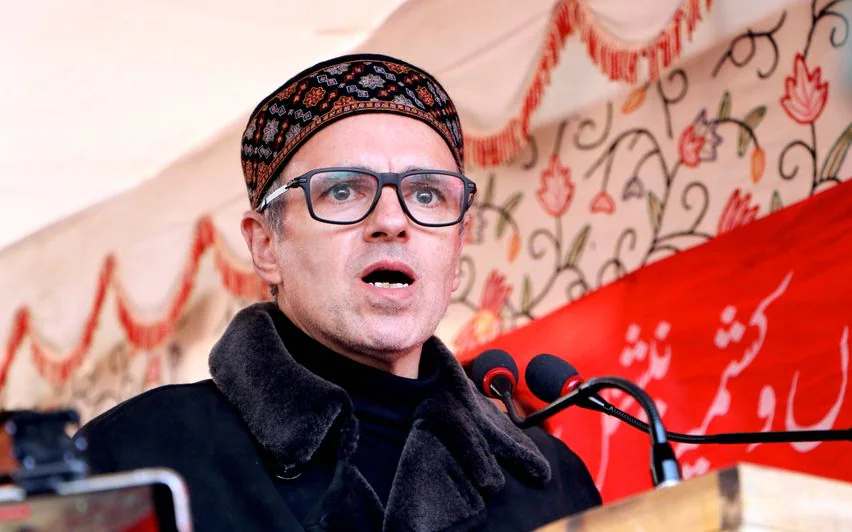By Ajaz Rashid
One year after Omar Abdullah took office as Chief Minister of Jammu and Kashmir, the region stands at a crossroads—caught between hope and disappointment, progress and paralysis, promises and reality. The expectations from his National Conference-led government were immense, and the political climate in October 2024 seemed primed for a new beginning. However, as the first anniversary passes, both public perception and expert analysis reveal a mixed legacy—a narrative shaped by tangible achievements, stalled reforms, and an avalanche of claims that struggle to withstand scrutiny.
The Promise of Paradigm Change
Omar Abdullah’s return was heralded as a landmark moment in the history of J&K politics—a restoration of democratic agency after years of Delhi’s direct rule and abrogation-induced uncertainty. The electoral mandate was unequivocal: jobs, security, infrastructure and dignity. Abdullah’s manifesto boasted ambitious pledges: restoration of statehood, reversal of Article 370 and 35A, free electricity and water, one lakh jobs, healthcare reform, women’s empowerment, tourism revival, and protection of land rights.
The Chief Minister set out benchmarks and issued directives with visible urgency, promising a turnaround within 100 days, and more transformative change in one year. Yet, these targets soon clashed with the logistical and constitutional realities on the ground.
Achievements
Despite widespread criticism, the government claims progress, especially in social welfare and urban renewal. Select schemes—such as free public transport for women and the rollout of the SEHAT digital health app—have earned local praise. The Annual Budget 2025-26 includes major allocations to healthcare, employment, and infrastructure:
- Healthcare innovation: Critical care blocks, block public health units, and district labs have been set up under the PM ABHIM program. Initiatives to combat drug addiction have reached 377 Panchayats, combining infrastructure with grassroots campaigns.
- Digital health: The new SEHAT app promises teleconsultation and digital health records, potentially bringing insurance and medical access to remote communities.
- Women’s safety: Free ridership on public transport for women, including e-buses starting April 2025, is a standout commitment.
- Employment: “Mission YUVA” was announced with the aspiration of launching 1,37,000 enterprises and 4,25,000 jobs over five years, signaling a shift towards entrepreneurship and skills development.
- Tourism and sports: The revival of the 69th National School Games and plans for winter sports tourism, especially in Gulmarg, represent attempts to leverage J&K’s natural assets for economic growth.
Some groundwork has been laid for mega-hydroelectric projects and the Udhampur-Srinagar-Baramulla Rail Link, although their timelines and financing remain uncertain.
Infrastructure and Development
Many government claims regarding completed infrastructure projects have invited harsh scrutiny from opposition, media, and watchdogs. Projects inaugurated by Omar Abdullah—including the Gulmarg Convention Centre and synthetic sports tracks—were, in fact, conceived, funded, and executed during the previous administration. The current regime is accused of ribbon-cutting on achievements not its own, turning governance into political appropriation.
Even reforms in water supply, electricity, and housing are hampered by sluggish implementation and the lack of financial backing, leading critics to call them mere announcements without substance.
Political Stalemate
After one year, the Omar Abdullah government’s central promises—restoration of statehood and reversal of Article 370/35A—remain unfulfilled. No timeline or formal engagement with the Centre has been set, and the ongoing legal and political impasse has left the majority of the electorate dissatisfied.
Moreover, legislative efforts to protect land and resource rights have stalled. The NC government’s overtures towards stakeholder engagement have proven intermittent and inconsistent, with sporadic dialogues lacking any coherent follow-up.
Economic Recovery
J&K’s Gross State Domestic Product (GSDP) is estimated to grow by 7% in 2024-25, on par with national trends. However, fiscal constraints continue to plague the administration. Post-pandemic revenue remains sluggish, and large-scale welfare schemes are underfunded. Public-private partnerships in health and insurance are promised, but few have taken off at scale.
Unmet Promises and Public Disillusionment
Public confidence in the government is at an all-time low, with visible political discord and indifferent administration fueling disillusionment, especially among youth. Protesters point to:
- Unrealized job schemes: Employment initiatives are sparse, recruitment drives limited, and no major regularization of daily wagers or contractual staff has occurred.
- Welfare gaps: Free electricity, gas cylinder schemes, and food rations remain on paper for most eligible families.
- Manifesto vs. Reality: Of 12 commitments made in the NC manifesto, only one has seen meaningful action.
- Civil disengagement: Stakeholder talks and district-level implementation remain weak, undermining the promise of people-driven governance.
Opposition Voices and Policy Hurdles
Opposition parties have intensely criticized Omar Abdullah’s administration for misleading the public with inflated budgets and hollow assurances. The lack of job security for casual workers, token gestures on press club revival, and failure to provide social safety net features strongly in their narrative.
Analysts also point to internal coalition tensions, bureaucratic bottlenecks—central officers dominating local decision-making—and political overreach that limits the feasibility of some promises.

Forward Path
As the government readies for its second year and the 2026 Legislative Assembly elections, pressure to deliver meaningful reform mounts. Potential pivots under discussion include phased rollouts of welfare (free electricity for BPL families), targeted local industry-based employment schemes, revival of Srinagar and Jammu urban planning, and pragmatic softening of rhetoric around contentious issues.
Observers warn, however, that the window for redemption is narrowing. Only demonstrated change—improved livelihoods, robust infrastructure, and visible employment—will save the government from further erosion of trust.
One year into Omar Abdullah’s stewardship, Jammu and Kashmir’s aspirations for transformation remain largely unmet. While modest social initiatives and bits of digital innovation glimmer on the horizon, the failure to fulfill headline promises—statehood, jobs, infrastructure—casts a shadow over the administration’s legacy. Unless the government reorients, moves beyond rhetoric, and delivers on the ground, the second year may well decide not only Omar Abdullah’s political fate, but the collective future of J&K’s experiment with post-conflict democratic renewal
Leave a Reply